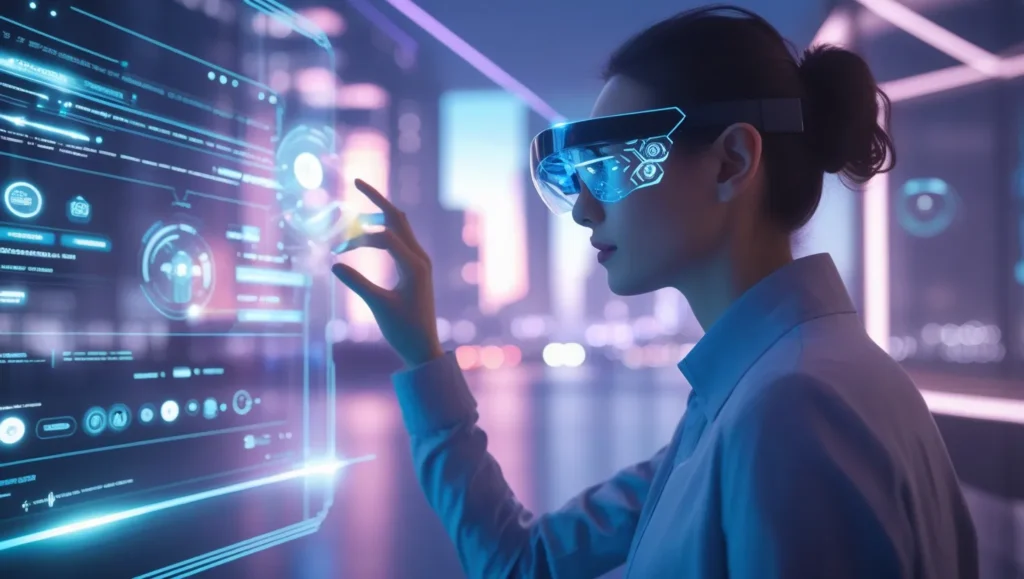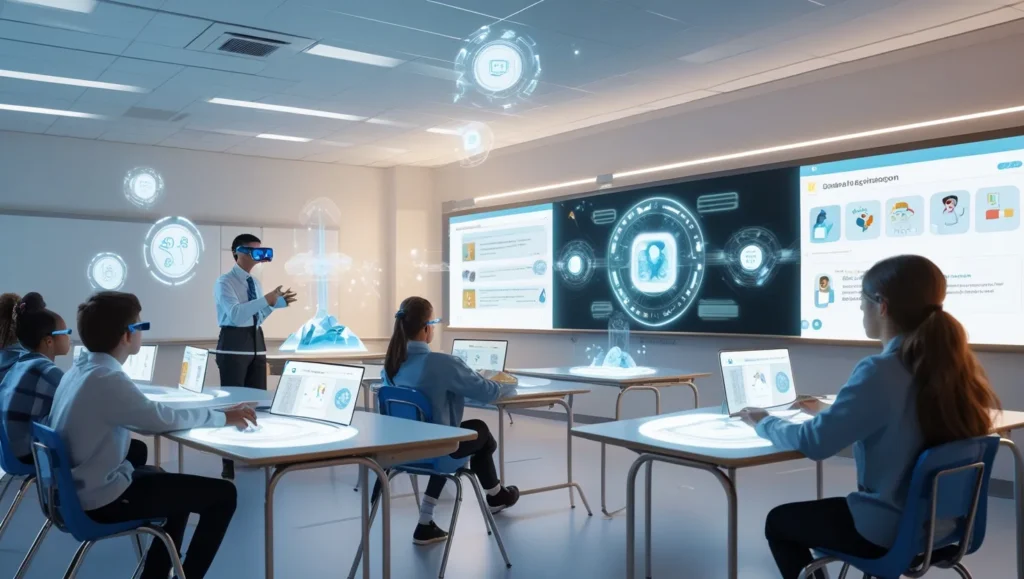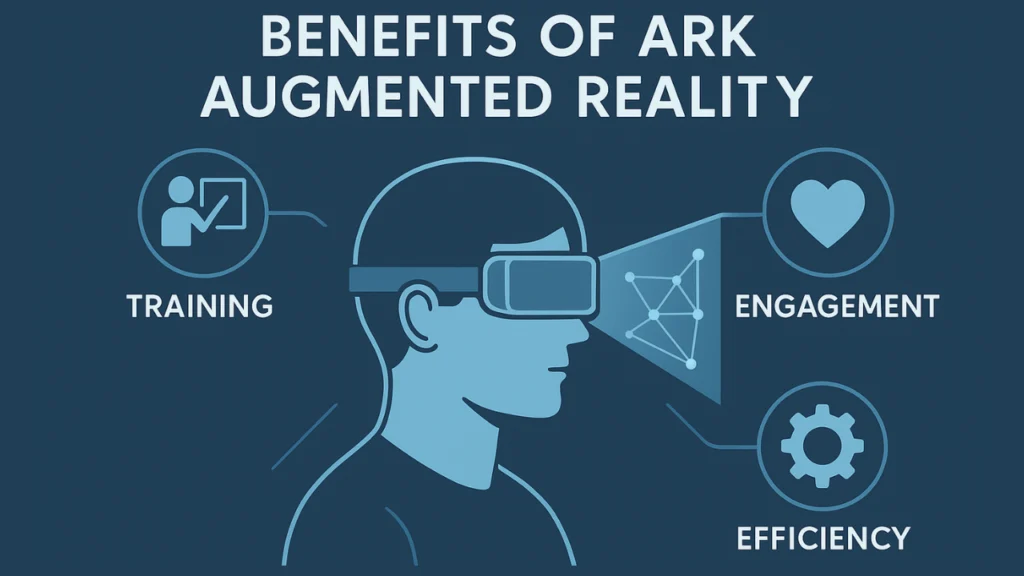
Augmented Reality has evolved beyond overlays and filters. Now it is intelligent, adaptive, and deeply contextual. The emergence of ARK Augmented Reality, a system that merges AI reasoning with immersive environments, marks the next leap toward human-level spatial intelligence. In this article, we’ll explore what ARK means, how it works, the underlying technologies, its applications, benefits, challenges, and the future of this field. Whether you’re a developer, business leader, or tech-savvy enthusiast, you’ll gain clear insight into this convergence of spatial computing, foundation models, and real-world interaction.
What is ARK Augmented Reality?
The term ARK Augmented Reality refers to an advanced AR paradigm titled Augmented Reality with Knowledge Interactive Emergent Ability, originally proposed by researchers at Microsoft Research.
In simple terms: ARK extends classical augmented reality by embedding knowledge inference, cross-modality reasoning, and introspective memory-based scene generation. It’s not just placing 3D models into your room, it’s about intelligent interaction, context-awareness, and adapting the virtual layer based on semantic understanding of the real world.
Origins
In practice, ARK Augmented Reality is characterised by:
- Immersive AR environments enriched with semantic understanding of the scene (objects, relationships, user intent).
- Use of spatial computing and cross-modality to infer context, adapt content, and generate interactive virtual elements.
- Integration of foundation models to support knowledge, memory, and reasoning, not just static overlays.
- A shift from marker-based/tracked AR to knowledge-driven, adaptive AR experiences.
In short, its augmented reality re-imagined with AI reasoning built in.
How Does ARK Augmented Reality Work?
To appreciate ARK’s power, we need to dig into how it works under the hood, from foundation models to cross-modality to reality-agnostic design.
Foundation models and knowledge memory
At the core of ARK is the idea of leveraging foundation models like GPT-4 and DALL·E. These models act as knowledge repositories, which can be tapped for AR tasks. The ARK approach uses knowledge-memory from those models to support scene generation, editing, and understanding in new domains.
For example, when a user moves a device through a room, the system doesn’t just overlay a 3D object it draws on prior learning about how objects behave, their relationships, and how to adapt them to a new scene.
Cross-modality and spatial computing
ARK uses cross-modality meaning it combines data from vision sensors, depth/LiDAR, inertial motion, language cues, and even gestures. This multimodal input allows rich scene understanding: recognizing surfaces, object interactions, lighting, user gaze, etc.
Moreover, spatial computing device pose, SLAM, and scene reconstruction allow the system to anchor virtual content in the physical world in a meaningful way. By combining vision, depth, and language, ARK goes beyond simple overlay it uses knowledge inference to interpret what’s happening and decide how to augment it.
Reality-agnostic design
One of the standout features of ARK is its reality-agnostic orientation: it can work in purely virtual settings, purely real-world settings, or a hybrid “mixed reality” space. The ARK paper calls this “macro-behavior of reality-agnostic
In practice, that means an ARK system could:
- Detect a real world table, infer it’s used for meetings, and overlay a digital twin whiteboard.
- Or, in a virtual training environment, generate scenes on the fly based on a user’s language prompts and sensor input.
This flexibility makes ARK especially suited for immersive AR, mixed reality (MR), and cross-platform use.
Core Technologies Behind ARK

Let’s break down the main technological pillars enabling ARK-style systems: AI/ML, knowledge graphs, hardware, and software frameworks.
AI / Machine Learning
- Foundation models: Large language models (LLMs) and image generation models provide knowledge, memory, and inference capability e.g., GPT-4, DALL·E.
- Multimodal models: Models trained across language + vision + depth enable cross-modality understanding for example, recognizing an object in LiDAR plus describing it in natural language.
- Scene generation & editing: The ARK system uses generative capabilities to create or modify 2D/3D scenes dynamically based on context. Microsoft
- Knowledge inference: The system pulls in external knowledge to reason about scene semantics: what an object is, how it interacts, and what the user might want.
Knowledge Graphs & Memory
- Knowledge graphs allow ARK Augmented Reality to map physical objects to semantic roles, e.g, a chair object for sitting, a table horizontal surface for work.
- Combined with memory modules, the system retains context across interactions: what the user did, what the scene looked like, and what modifications were made. This memory enables emergent behaviour.
- The ARK research paper emphasises transferring knowledge–memory from foundation models to novel domains. Microsoft
Hardware
- Sensors: Depth cameras, LiDAR sensors, IMUs inertial measurement units, and RGB cameras perform environment scanning and tracking.
- Processing: High-performance GPUs/NPUs on mobile or edge devices to run multimodal ML models in real time.
- Displays: AR head-mounted displays HMDs or see-through glasses, mobile phones/tablets using APIs like ARKit Apple or ARCore Google
Software Frameworks
- AR SDKs: ARKit, ARCore, Unity via its AR Foundation and Unreal Engine plugins provide the base for environment tracking, anchoring and rendering.
- Spatial computing toolkits: Real-time SLAM, scene reconstruction, mesh generation.
- ML/AI libraries: TensorFlow, PyTorch, ONNX runtime, and specialized inference engines for multimodal models.
- Integration layers: Bridging ML models, knowledge graphs and AR rendering pipelines this is a key innovation in ARK-style systems.
Together, these technologies enable immersive AR experiences that adapt, reason and respond to real-world context.
Applications Across Industries
The power of ARK-style augmented reality spans gaming, architecture, education and enterprise. Here’s how.
Gaming
In gaming, the combination of AI-driven AR and spatial computing opens up new forms of interactive storytelling and world-building. For example:
- Using ARK Augmented Reality, a game could scan your real-room environment, infer the layout of the sofa, table, doorway and generate virtual characters that intelligently navigate, hide behind real objects or interact with you.
- Cross-modality lets characters respond to your voice commands, gesture, or change behaviour based on the scene.
- Metaverse integration becomes richer: digital twins of physical spaces, game objects anchored to real surfaces, dynamic scene generation on-the-fly.
Architecture & Construction
Building and design firms increasingly adopt AR for visualising models, collaborating on-site and training staff. With ARK Augmented Reality
- A digital twin of a building site can be overlaid onto physical scaffolding. The system knows that a wall is structural and highlights load-bearing vs non-load-bearing components.
- Designers use mixed reality to walk through a building before it’s built; spatial computing and knowledge graphs allow the system to infer zones, e.g, this is a corridor, and automatically apply lighting or HVAC overlays.
- Enterprises leverage real-time updates: when the model changes, ARK can update the physical-virtual alignment and alert teams to discrepancies.
Education
Immersive AR becomes far more effective when infused with AI reasoning and semantic context. The use of ARK Augmented Reality in education is mentioned below
- Students can point a device at a human skeleton or machine and receive guided instruction, interactive lifecycle visualisations and branching lessons based on their behaviour.
- With cross-modality, the system understands both what the student sees and what they say allowing adaptive tutoring experiences.
- ARK-style systems deliver experiences where knowledge inference and immersive content combine: for example, scanning a chemical lab model and being asked to predict reaction outcomes based on the system’s built-in knowledge graph.

Enterprise & Training
For businesses, ARK Augmented Reality offers high-value solutions:
- Field service technicians wear AR headsets: the system recognises equipment, infers its type from a knowledge graph, and overlays step-by-step repair instructions.
- In manufacturing, ARK can monitor workflows and provide real-time guidance: This lever you’re about to flip controls pressure valve X and overlay highlight, safety warnings or compliance notes.
- In remote collaboration, AR devices connect to digital twins of physical assets so that global teams share the same semantic model, visualised in real space.
Across industries, the emphasis is on knowledge-driven AR, leveraging semantic context rather than static overlays.
Benefits of ARK Augmented Reality

When implemented well, ARK Augmented Reality offers distinct advantages:
- Higher immersion with the semantic context
Virtual content not only appears in the scene but behaves meaningfully e.g, interacts with real objects, responds to voice/gesture. - Scalable scene generation in unseen domains
Because ARK leverages foundation models and knowledge memory, it can adapt to new environments without extensive manual training datasets. - Increased efficiency and productivity
For enterprises, ARK reduces training time, improves task accuracy thanks to intelligent overlays, and supports decision-making in real time. - Better user experience
In education/gaming, ARK transforms AR from novelty to meaningful interaction: the system remembers what you did, adapts content, uses cross-modal cues voice , vision and stays relevant. - Metaverse & digital twin readiness
ARK-style systems naturally feed into metaverse integration and digital twin architectures: the physical and virtual worlds align, enriched by knowledge inference.
In essence, ARK shifts AR from reactive visual augmentation to proactive, intelligent, context-aware spatial computing.
Challenges and Limitations
It’s not all smooth sailing. Implementing true ARK Augmented Reality style systems still faces key challenges.
Data and Model Complexity
- Foundation models are large, resource-intensive and may not run locally on mobile AR devices. Offloading to cloud/edge introduces latency and connectivity issues.
- Knowledge graphs and memory modules require careful design; integrating with scene understanding means managing heavy data flows and ensuring real-time performance.
Scene Generalisation and Robustness
- While ARK Augmented Reality aims for reality-agnostic behaviour, handling all edge cases lighting changes, cluttered spaces, occlusions remains difficult.
- The research acknowledges that “the common practice requires deploying an AI agent to collect large amounts of data for each new task. This process is costly, or even impossible for many domains.
- Over-reliance on foundation models may lead to unexpected behaviour in domains with scant training examples or domain-specific quirks.
Hardware and Sensor Limitations
- Accurate spatial sensing requires high-quality depth cameras or LiDAR, which are expensive or not yet widespread.
- Battery life, compute heat, sensor accuracy, and calibration drift still pose practical barriers for mobile AR headsets.
Privacy, Security and Ethical Concerns
- ARK systems process rich multimodal data video, depth, and voice building contextual maps of the environment raising privacy and security issues.
- There’s a risk of misuse: automated scene generation and semantics might misinterpret sensitive environments or propagate bias from foundation models.
Content and UX Design
- Even with powerful AI, creating genuinely usable AR experiences demands strong UX design: mapping semantics, maintaining alignment, managing occlusion, and guiding user attention.
- If poorly implemented, AR content becomes distracting, breaks immersion or performs worse than simpler AR overlays.
In short, while the promise of ARK Augmented Reality is compelling, real-world deployment needs careful engineering, strong hardware, robust data pipelines and ethical safeguards.
Future of ARK Augmented Reality
Looking ahead, we can foresee several trends and possibilities for ARK-style systems.
2025 and Beyond: What to Expect
- More edge-optimized foundation models: Smaller multimodal models that can run on AR headsets/mobile devices will reduce latency and enhance privacy.
- Widespread LiDAR and depth-sensing: As sensors become cheaper and more integrated (in phones, glasses), richer scene reconstruction and spatial computing will enable more reliable ARK experiences.
- Enterprise adoption growth: Industries like manufacturing, oil & gas, healthcare and logistics will increasingly adopt knowledge-driven AR for training, maintenance, digital twin management.
- Metaverse-native experiences: ARK will serve as a bridge between physical and virtual worlds. Digital twins, cross-platform AR & VR experiences, and semantic overlays will integrate with metaverse ecosystems.
- Collaborative AR and shared semantics: Multiple users in the same environment will share the same ARK knowledge graph, enabling synchronous mixed-reality collaboration: spatial annotations, shared virtual objects, coordinated workflows.
- Better cross-modality UX: Voice, gesture, gaze, environment context and even biometrics will feed into ARK’s reasoning engine, delivering truly adaptive interactions.
- Ethical & regulatory frameworks: As ARK systems become mainstream, privacy standards, sensor certification, content oversight and model auditing will become necessary.
Why Now is the Moment
- Foundation models are mature enough to meaningfully support inference in spatial/vision tasks.
- Hardware sensors, chips is catching up to enable real-time AR.
- Business demand for immersive AR is rising due to remote work, training deficits, and metaverse hype.
- Developer ecosystems like Unity and Unreal Engine now support AR/VR workflows at scale.
Thus, the convergence of AI ,spatial computing and AR frameworks means 2025 onwards will see ARK-style systems move from research labs into real-world deployment.
ARK-Style Systems

If you’re a developer or business leader looking to harness ARK Augmented Reality, here’s a practical framework to get started.
For Developers
- Master AR SDK basics: Familiarise with Apple’s ARKit (scene understanding, motion tracking) and Google’s ARCore. For example, ARKit allows detection of planes, anchors and environment lighting. Wikipedia
- Explore Unity/Unreal for AR: Use Unity’s AR Foundation or Unreal’s AR plugins to create spatial experiences.
- Integrate foundation models & knowledge graphs: Experiment with lightweight multimodal models, vision language, and build a simple knowledge graph to handle scene semantics, objects, relations, and actions
- Focus on cross-modality: Combine visual input (camera, depth), inertial sensors, voice commands or gaze tracking. Build sample projects where the AR overlay responds to user voice or gesture.
- Prototype environment-agnostic scenes: Build scenes that adapt regardless of the room layout e.g a virtual whiteboard that anchors to a detected wall, regardless of angle or furniture.
- Optimize for performance: Focus on latency, battery drain, occlusion correctness, realism and user comfort.
For Businesses
- Identify compelling use-cases: Focus on high-ROI scenarios where knowledge-driven AR adds value e.g maintenance instructions, digital twin walkthroughs, interactive training.
- Map out data pipelines: Identify what sensors, models, knowledge resources you’ll need e.g asset databases, CAD models, process workflows.
- Pilot small & scale: Launch a pilot in a controlled environment e.g. one facility and evaluate metrics like task time reduction, error rate, and user satisfaction.
- Build internal expertise: Combine domain experts e.g., engineers, trainers with AR/AI developers to craft meaningful scenarios.
- Plan for integration: Ensure your AR system integrates with the enterprise backend asset management, IoT, knowledge base so that the system remains contextual and up to date.
- Monitor privacy & ethics: Establish policies around sensor data capturing, user consent, model bias and environmental safety.
By following these steps, developers and businesses can gradually adopt ARK Augmented Reality ,style AR, rather than jumping to fully complex systems upfront.
FAQs
What makes ARK Augmented Reality different from traditional AR or mixed reality?
Traditional AR overlays fixed virtual content onto real-world scenes e.g placing 3D models on a table. In contrast, ARK Augmented Reality uses knowledge inference, foundation models, cross-modality reasoning and spatial computing to dynamically interpret, adapt and augment environments in a meaningful way.
Do I need special hardware to build ARK-style experiences?
While you can start with a modern smartphone (with camera, motion sensors), to truly deliver ARK’s potential you’ll benefit from depth/ LiDAR sensors, high-performance compute (GPU/NPUs), and AR head-mounted displays or smart glasses. The richer the sensing and compute, the richer the experience.
Which software frameworks support ARK development?
Key frameworks include Unity via AR Foundation, Unreal Engine’s AR tools, Apple’s ARKit and Google’s ARCore. For knowledge and multimodal AI you’ll use libraries like PyTorch, TensorFlow and ONNX runtime. ARK-style systems combine both AR tracking/rendering and AI/knowledge layers.
What industries can benefit most from ARK Augmented Reality?
Gaming, architecture/construction, education, enterprise training, manufacturing, field service and digital twin management are key beneficiaries. These sectors benefit when AR is not just visual but semantic and adaptive.
What are the biggest challenges to deploying ARK systems at scale?
Challenges include: hardware limitations sensors, compute model/data complexity, generalisation to new scenes, user experience design, privacy/security concerns and integration into existing business processes. Overcoming them requires careful planning and robust infrastructure.
Conclusion
The era of simple overlays is over. With ARK Augmented Reality, we step into a world where immersive AR meets knowledge inference, spatial computing, foundation models, and cross-modality reasoning. Moreover, this approach transforms how we build, interact, train and collaborate across industries.
Businesses that embrace ARK-style systems stand to gain richer, more meaningful AR experiences and potentially lead the charge into the next wave of spatial computing and metaverse integration. Additionally, as hardware, sensors and AI models continue to improve, the barrier to entry lowers, and the possibilities expand.
If you’re ready to get started, focus on use-cases, build your sensing/knowledge pipeline, prototype with ARKit/ARCore and Unity, and layer in AI/knowledge gradually. In doing so, you’ll be part of shaping the next generation of mixed reality, digital twins, and intelligent spatial experiences.


